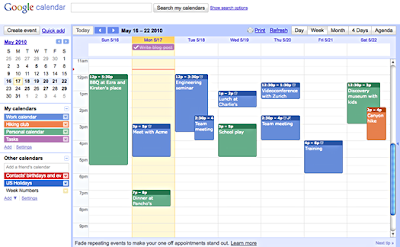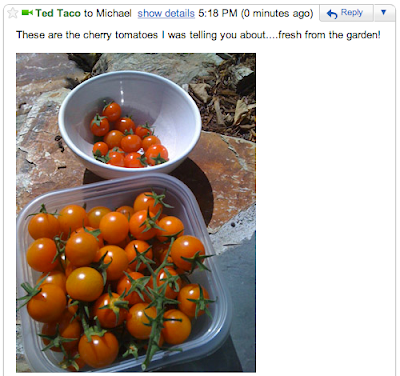This is one of a regular series of posts on search experience updates. Look for the label This week in search and subscribe to the series. - Ed.
Safety, security and privacy are important parts of the search equation for us at Google, particularly as we continue to bring you the best possible search experience on the web. Security in particular can be an important part to your interaction with the Google search box, so we're always looking for ways to make changes and enhancements to that interaction secure. Especially as we all spend more time online, the importance of security has taken center stage. So in addition to this week's secure search enhancement, you can read our latest news and insights at our Online Security Blog.
More secure searches
Years ago we added Secure Sockets Layer (SSL) encryption to products ranging from Gmail to Google Docs, as part of our effort to advance the safety and security of our products for you. Now you have a new choice to search more securely using https://www.google.com. When you use this https address, an encrypted session is established between your browser and Google that uses an SSL connection. Just like on an online banking page, the "https" confirms that you are using a more secure connection that will help protect your search terms and your search results from being intercepted by a third party. For more information on this security enhancement, read our announcement.
Example of encrypted search: [flowers]
Whether you're planning a trip by train or scouring the real-time web, this week's roundup also includes two search enhancements that should greatly improve the richness of yor search results -- no matter what you're looking for.
Images in real-time search updates
Ten blue links on a search results page can provide you with a lot of really helpful information, but sometimes you're searching for content that is richer than a textual web page. For instance, what are people saying about Lady Gaga's latest garb? Until now, it's been hard to get this kind of rich visual detail that's really fresh. So this week we began rolling out a feature for images in real-time search. When searching for the latest content across the real-time web, you'll be able to quickly see the images people are talking about right now (based on URLs of those images in their public updates.) To view this new feature, click on "Updates" in the lefthand panel when you complete a search. Then click on "Updates with images."
Example search: [pac-man doodle]
Transit search enhanced
Often when we search, it's to get from point A to point B, such as when the best route is by train. Then it's important to know the specific details of the train station near you, like which lines it serves. Now you can easily get this information in the lefthand panel on Google Maps by searching for the transit station. The lines are colored and grouped by transit type to make it easier to find the line you're looking for. For rail trains, you can see the departure time directly. For other types of transit like subways, buses and commuter trains, you can click on the line name to get the next departure time of each direction—all without having to leave the current page.
Example search: [Broadway-Lafayette St Station]
Thanks for reading, and stay tuned next week for more search news. Search on!
Read more > This week in search 5/30/10
Safety, security and privacy are important parts of the search equation for us at Google, particularly as we continue to bring you the best possible search experience on the web. Security in particular can be an important part to your interaction with the Google search box, so we're always looking for ways to make changes and enhancements to that interaction secure. Especially as we all spend more time online, the importance of security has taken center stage. So in addition to this week's secure search enhancement, you can read our latest news and insights at our Online Security Blog.
More secure searches
Years ago we added Secure Sockets Layer (SSL) encryption to products ranging from Gmail to Google Docs, as part of our effort to advance the safety and security of our products for you. Now you have a new choice to search more securely using https://www.google.com. When you use this https address, an encrypted session is established between your browser and Google that uses an SSL connection. Just like on an online banking page, the "https" confirms that you are using a more secure connection that will help protect your search terms and your search results from being intercepted by a third party. For more information on this security enhancement, read our announcement.
Example of encrypted search: [flowers]
Whether you're planning a trip by train or scouring the real-time web, this week's roundup also includes two search enhancements that should greatly improve the richness of yor search results -- no matter what you're looking for.
Images in real-time search updates
Ten blue links on a search results page can provide you with a lot of really helpful information, but sometimes you're searching for content that is richer than a textual web page. For instance, what are people saying about Lady Gaga's latest garb? Until now, it's been hard to get this kind of rich visual detail that's really fresh. So this week we began rolling out a feature for images in real-time search. When searching for the latest content across the real-time web, you'll be able to quickly see the images people are talking about right now (based on URLs of those images in their public updates.) To view this new feature, click on "Updates" in the lefthand panel when you complete a search. Then click on "Updates with images."
Example search: [pac-man doodle]
Transit search enhanced
Often when we search, it's to get from point A to point B, such as when the best route is by train. Then it's important to know the specific details of the train station near you, like which lines it serves. Now you can easily get this information in the lefthand panel on Google Maps by searching for the transit station. The lines are colored and grouped by transit type to make it easier to find the line you're looking for. For rail trains, you can see the departure time directly. For other types of transit like subways, buses and commuter trains, you can click on the line name to get the next departure time of each direction—all without having to leave the current page.
Example search: [Broadway-Lafayette St Station]
Thanks for reading, and stay tuned next week for more search news. Search on!

















